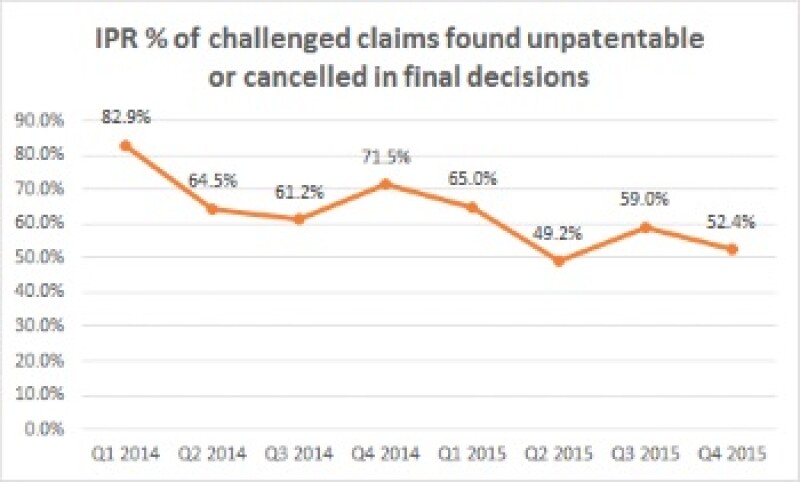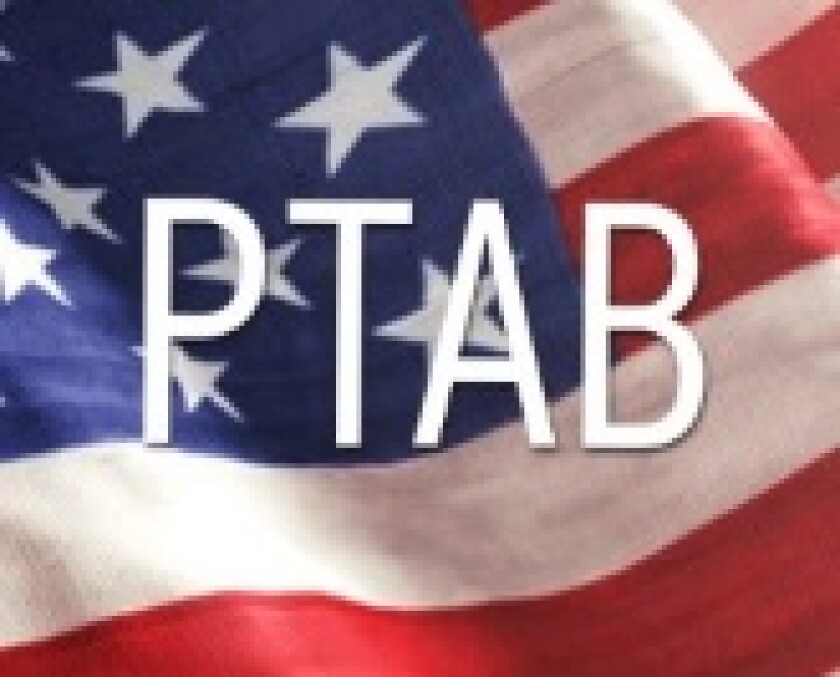A recently-released study of decisions issued by the Patent Trial and Appeal Board (PTAB) from Fitzpatrick Cella Harper & Scinto claims the Board is less of a patent killer than people think.
“Despite the initial anecdotal reports that suggested a dire situation for patent owners, the study shows much more balanced outcomes,” Fitzpatrick says.
According to the study, 40% of patent claims challenged in inter partes review (IPR) proceedings survived scrutiny, while about 15% of patent claims survived challenges in the transitional program for covered business method patents (CBM) reviews. Fitzpatrick says the higher rate of unpatentability in CBM reviews has more to do with the Supreme Court’s Alice decision, with the Board significantly more likely to strike down claims under Alice-type challenges than on prior art challenges.
For the study, the firm reviewed all final written decisions in IPR and CBM proceedings as well as substantive decisions not to institute a proceeding, taking into account duplicative challenges. The study includes in its data all substantive decisions not to institute trial, while excluding procedural decisions such as missing filing deadlines.
Fitzpatrick said the enhancement of its methodology to include decisions not to institute trial was “driven in part by a trend in which the PTAB has been denying institution at an increasing rate”. The PTAB declined to institute 13.5% of the IPR cases in 2013. That rate climbed to 25.8% in 2014 and 34.7% in 2015.

The chart to the right shows the percentage of claims that were found unpatentable or cancelled out of those challenged by the petitioner in IPR proceedings that reached final written decisions or were denied institution on substantive grounds. The data suggests that there has been a drop in unpatentability findings. "It is unclear if this is due to adjustments by the PTAB, the quality of patents challenged by petitioners, the quality of petitions/defenses, or some combination thereof," said Fitzpatrick. The listed periods are for final written decisions. The analysed decisions not to institute are from one year earlier.
Justin Oliver, partner at Fitzpatrick and head of the firm’s PTO contested proceedings practice, said “while PTAB proceedings still favour challengers, they do not have as significant an advantage as previously thought”. He added: “In fact, the results indicate PTAB proceedings are more comparable to the European Patent Office’s opposition procedure and, on certain issues, district court litigations.”
In 2015, claims survived European opposition proceedings in unamended form in about 31% of the cases. But a big difference in European oppositions is that 38% of the decisions approved amended claims, giving patent owners viable claims 69% of the time.
Amending claims in PTAB trials has been nigh on impossible, with the Board only granting its sixth-ever motion to amend on April 22. “Thus, the data shows that the real story may not be that the PTAB disfavours patent claims, but that it disfavours claim amendments,” says Fitzpatrick.
For IPRs, claims survived anticipation challenges 59% of the time, where the survival rate in district court litigations was about 69%.
However, for obviousness challenges the survival rates at the PTAB and district courts are about 50% and 72%, respectively. “The data shows that obviousness challenges receive much better receptions in the PTAB as compared to district courts,” says Jonathan Berschadsky, partner at the firm and chair of the telecommunications and networks practice group. “It also shows that the most important decision in a PTAB trial may be the institution decision, rather than the final written decision.”
While the rate at which the PTAB denies institution has been rising, once instituted, the success rate of validity challenges in IPRs is about 85%.










